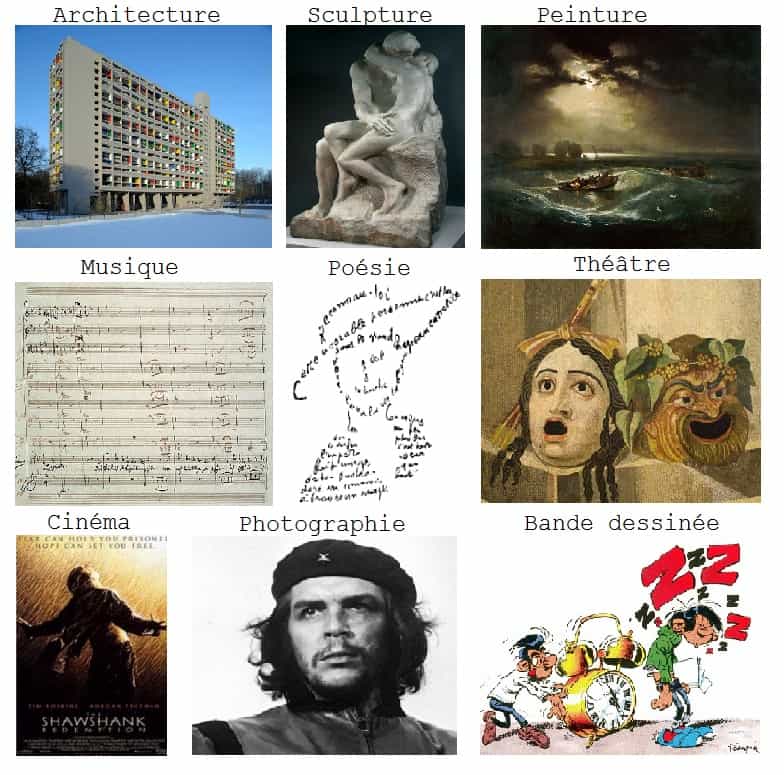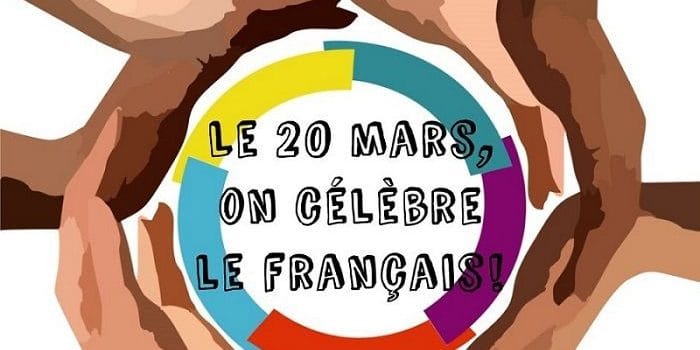Du 1er au 9e art : d'où vient cette étrange numérotation des arts ?

En français, on parle du 7e art pour désigner le cinéma, ou encore du 9e art pour la bande dessinée. Mais pourquoi ces chiffres ? Et quels sont les autres « arts » avant et après ? Derrière cette numérotation, il y a une longue histoire, qui commence bien avant l’invention du cinéma…
Au XVIIIe siècle : Kant et la naissance d'une pensée des arts
Le philosophe allemand Emmanuel Kant (1724–1804) est l’un des premiers à proposer une classification des arts. Dans La Critique de la faculté de juger (1790), il distingue trois grands types d’art :
- Les arts plastiques (bildenden Künste) : sculpture, peinture, architecture – ils expriment des idées à travers des formes visibles.
- Les arts de la parole (redenden Künste) : éloquence et poésie – ils s’adressent à l’intelligence par le langage.
- L’art du beau jeu des sensations : musique et art des couleurs – ils touchent directement nos émotions.
Kant cherche ainsi à classer les arts en fonction de la manière dont ils stimulent nos sens et notre esprit. Il ne donne pas de numéro, mais il pose les bases d’une réflexion esthétique.
Au XIXe siècle : Hegel et le système des cinq arts
Plus tard, le philosophe allemand Georg Wilhelm Friedrich Hegel (1770–1831) propose dans ses cours d’esthétique une autre classification. Pour lui, les arts doivent être classés du plus matériel au plus expressif :
- L’architecture
- La sculpture
- La peinture
- La musique
- La poésie
Ce classement marque une volonté de créer un système logique et hiérarchique, mais reste très philosophique.
Au XXe siècle : la naissance du 7e art
En 1911, l’Italien Ricciotto Canudo, passionné de culture, publie Le Manifeste des sept arts et propose une numérotation modernisée :
- Architecture
- Sculpture
- Peinture
- Musique
- Poésie/littérature
- Arts de la scène (théâtre, danse)
- Cinéma
Canudo voit dans le cinéma un art total, qui combine mouvement, image, musique, narration… C’est lui qui popularise l’idée de numéroter les arts, avec le cinéma comme 7e art.
Et après ? Les arts contemporains
D'autres numéros ont été ajoutés au fil du temps :
- 8e art : la télévision, la radio ou les arts médiatiques
- 9e art : la bande dessinée (terme popularisé dans les années 60)
- 10e art : les jeux vidéo (proposé par certains aujourd’hui)
- 11e art : les arts numériques, interactifs, installations…
En 1969, le philosophe français Étienne Souriau propose une classification encore plus fine, basée sur les sensations (forme, ligne, couleur, mouvement, lumière, etc.). Il inclut même des formes comme l’éclairage, la prosodie pure ou la pantomime dans ce qu’il appelle « l’esthétique comparée ».
Un classement utile ?
Ces classifications montrent surtout que la notion d’art évolue avec le temps. On ne crée pas une cathédrale comme un film ou une bande dessinée… mais toutes ces formes peuvent émouvoir, faire réfléchir, émerveiller.
Comprendre cette numérotation permet aussi de mieux saisir la richesse de la culture francophone, et de s’ouvrir à des formes artistiques parfois moins reconnues dans d'autres cultures.
TRADUCTION :
From the 1st to the 9th Art: Where Does This Strange Numbering of the Arts Come From?
In French, people often refer to the 7th art to mean cinema, or the 9th art for comic books. But why use numbers? And what are the other "arts" before and after? Behind this numbering lies a long history, which began well before the invention of cinema…
The 18th Century: Kant and the Birth of Artistic Thought
The German philosopher Emmanuel Kant (1724–1804) was one of the first to propose a classification of the arts. In The Critique of the Power of Judgment (1790), he identifies three major types of art:
- The visual or plastic arts (bildenden Künste): sculpture, painting, architecture – they express ideas through visible forms.
- The spoken arts (redenden Künste): rhetoric and poetry – they address the intellect through language.
- The art of the beautiful play of sensations: music and the art of color – they touch us directly through emotions.
Kant thus seeks to classify the arts according to how they stimulate our senses and our mind. He doesn’t assign numbers, but he lays the foundation for modern aesthetic theory.
The 19th Century: Hegel and the System of Five Arts
Later, the German philosopher Georg Wilhelm Friedrich Hegel (1770–1831) proposes another classification in his lectures on aesthetics. He ranks the arts from the most material to the most expressive:
- Architecture
- Sculpture
- Painting
- Music
- Poetry
This classification reflects a desire to build a logical and hierarchical system, though it remains highly philosophical.
The 20th Century: The Birth of the 7th Art
In 1911, Italian cultural critic Ricciotto Canudo published The Manifesto of the Seven Arts, in which he proposes a modernized numbering system:
- Architecture
- Sculpture
- Painting
- Music
- Poetry/Literature
- Performing Arts (theater, dance)
- Cinema
Canudo saw cinema as a total art form, combining movement, imagery, music, and storytelling. He was the first to popularize the idea of numbering the arts, with cinema officially recognized as the 7th art.
And Then? Contemporary Arts
Over time, other numbers were added:
- 8th art: television, radio, or media arts
- 9th art: comic books (a term popularized in the 1960s)
- 10th art: video games (according to some modern classifications)
- 11th art: digital, interactive, and installation art
In 1969, French philosopher Étienne Souriau proposed an even more detailed classification based on sensory experience (form, line, color, movement, light, etc.). He included forms such as lighting design, pure prosody, and pantomime in what he called “comparative aesthetics.”
A Useful Classification?
These classifications show above all that the concept of art evolves over time. A cathedral is not made in the same way as a film or a comic book… but all of these forms can move us, make us think, and inspire wonder.
Understanding this numbering system also helps us appreciate the richness of Francophone culture and opens our minds to art forms that may be less recognized in other cultures.



